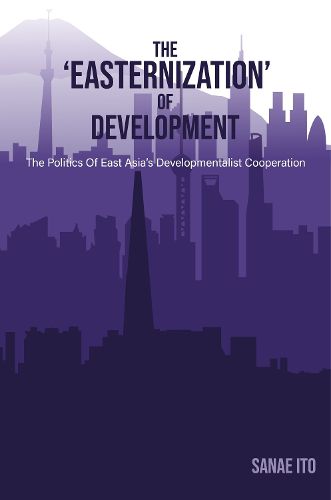Readings Newsletter
Become a Readings Member to make your shopping experience even easier.
Sign in or sign up for free!
You’re not far away from qualifying for FREE standard shipping within Australia
You’ve qualified for FREE standard shipping within Australia
The cart is loading…






Just over a decade ago, a new paradigm emerged that challenged the 'conventional' type of global development assistance by which the Global North vertically supports the Global South. It became apparent that a shift was taking place - to an approach built upon horizontal relationships between equal partners "often" seeking mutual benefits from development cooperation. This book sets out how East Asian aid donors and their innovative practices are central to this new paradigm.
The authors of each chapter map the evolution of East Asian development approaches against the background of the political and economic focus of the Sustainable Development Goals (SDGs). While keeping in sight the broader picture unfolding in the global community, the book's chapters go further, to discuss foreign aid practices of South Korea, China and Japan separately in their relation to domestic developmentalist politics.
The findings in this book highlight the importance of understanding the past, present and future of development strategy in East Asia in the current global context. The recent impact of the Covid-19 pandemic, as well as the pressing climate change crisis, call for an urgent re-examination of priorities in development cooperation.
$9.00 standard shipping within Australia
FREE standard shipping within Australia for orders over $100.00
Express & International shipping calculated at checkout
Just over a decade ago, a new paradigm emerged that challenged the 'conventional' type of global development assistance by which the Global North vertically supports the Global South. It became apparent that a shift was taking place - to an approach built upon horizontal relationships between equal partners "often" seeking mutual benefits from development cooperation. This book sets out how East Asian aid donors and their innovative practices are central to this new paradigm.
The authors of each chapter map the evolution of East Asian development approaches against the background of the political and economic focus of the Sustainable Development Goals (SDGs). While keeping in sight the broader picture unfolding in the global community, the book's chapters go further, to discuss foreign aid practices of South Korea, China and Japan separately in their relation to domestic developmentalist politics.
The findings in this book highlight the importance of understanding the past, present and future of development strategy in East Asia in the current global context. The recent impact of the Covid-19 pandemic, as well as the pressing climate change crisis, call for an urgent re-examination of priorities in development cooperation.